Making sourdough bread is really the talk of the town, and it seems like what everybody is lusting after is the high-hydration sourdough bread. The problem is that when you up the hydration, you get a soupy dough. Then you try to up the whole grain content, but then you lose the strength of the gluten. The answer to your problems is using a tangzhong. This is my recipe for a high-hydration sourdough bread using a tangzhong.
To make this bread, you will need an active sourdough starter. If you don’t have one, you can follow my method, which is super simple.
This bread, while much easier than your garden variety high hydration sourdough bread, is not for beginners.
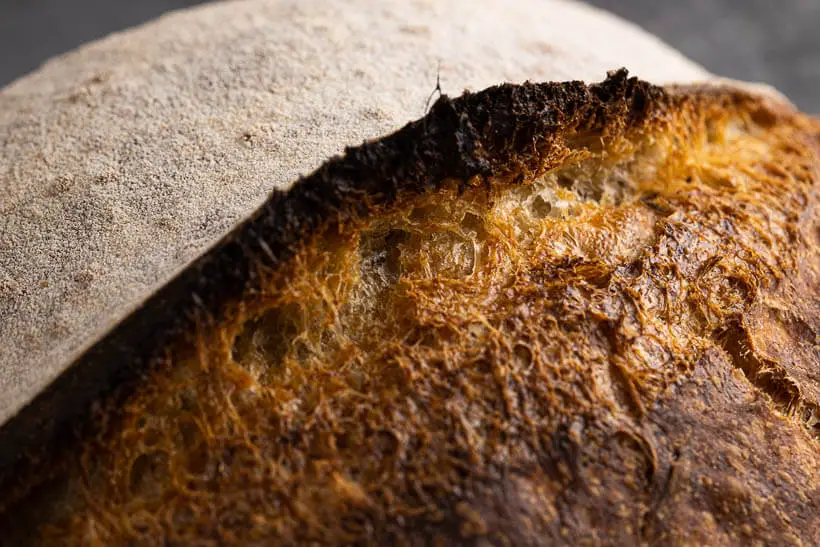
If you are new to the world of sourdough bread baking, I recommend reading my article ‘Master Recipe‘, which explains all the techniques and what you need to know to get started in the sourdough world.
If you are just here for the recipe, you can press the button underneath to be automagically transported to the recipe:
Jump to Recipe Jump to VideoWhat’s a tangzhong?
Science Alert! This section will contain some scientific wordings and explanations. If that is not your cup of tea, jump ahead to the next section.
A roux is normally equal parts flour and fat cooked together to form a thickening agent used to thicken sauces.
A tangzhong is a roux made using flour and water and is commonly mixed in the proportions of 1 part flour to 5 parts water.
Where does it come from?
The tangzhong method originates from Japan but what popularized by Chinese writer Yvonne Chen in the 1990s with her book The 65° Bread Doctor.
The book was never translated into English, but the method has since gained a lot of traction all over the world.
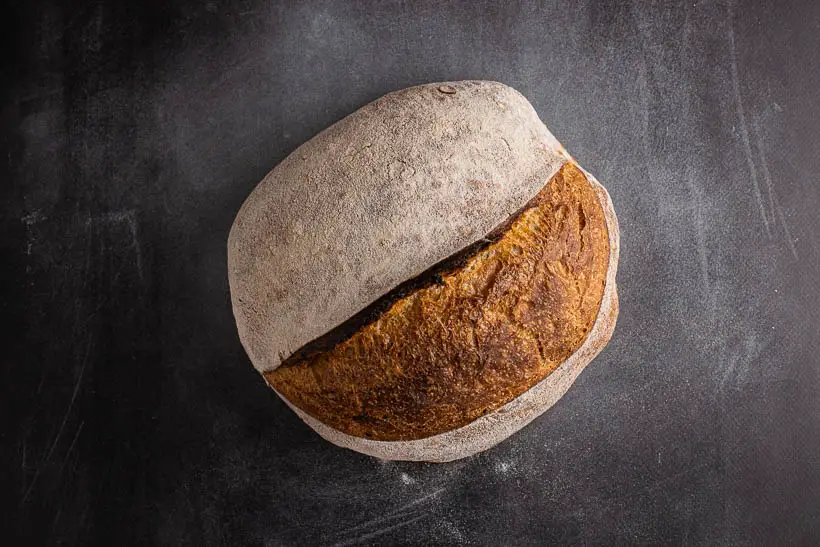
How do you make a tangzhong, then?
After mixing the flour and water, the mixture is cooked to 65°C/149°F. This gelatinizes the starches in the flour.
This helps the moisture to be encapsulated in the starch molecules.
Harold McGee writes in his excellent On food and cooking:
During the baking of bread and cakes, the starch granules absorb water, swell, and set to form the rigid bulk of the walls that surround the bubbles of carbon dioxide. At the same time their swollen rigidity stops the expansion of the bubbles and so forces the water vapor inside to pop the bubbles and escape, turning the foam of separate bubbles into a continuous spongy network of connected holes. If this didn’t happen, then at the end of baking the cooling water vapor would contract and cause the bread or cake to collapse.
The formula of this high-hydration sourdough bread recipe
The dough is made with about 20% whole-grain wheat flour. I mostly do that with my bread recipes to add some extra flavor and texture.
The tangzhong percentage is 20% of the weight of the entire dough. That can be taken up to about 40%, which I will probably experiment with to see what difference it makes.
| Weight | Ingredient | Baker's Percentage |
|---|---|---|
| 546g | bread flour | 70.8% |
| 172g | whole-grain wheat flour | 22.3% |
| 377g | water | 48.9% |
| 16g | salt | 2.1% |
| 53g | Tangzhong Flour | 6.9% |
| 266g | Tangzhong Water | 34.5% |
If you want to play around with the formula, you can do that with my bread calculator. If you want the formula before conversion to tangzhong so you can change the tangzhong amount, it can be done using this formula.
The conclusion of this high-hydration sourdough bread recipe
‘Tis not a lie. Gelatinizing part of your flour helps you with much more manageable dough, even at very high hydrations.
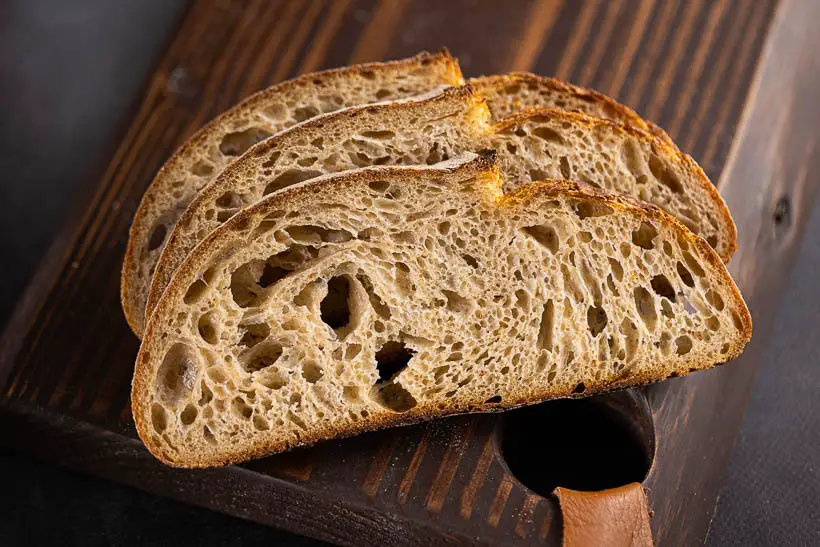
The resulting bread is wonderful. Open crumb, crispy crust, great oven spring, intoxicating smell, and a wonderful taste.
It’s not the last time I will use this method to make my sourdough bread.
Please share on social media
This is my recipe for high-hydration sourdough bread using the tangzhong method. I hope you will try to make it, because it’s awesome.
If you make it and post it on Instagram, please tag me as @foodgeek.dk so I can see it. That would make me very happy.
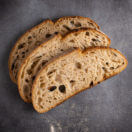
Tangzhong Sourdough Bread
Ingredients
Tangzhong
- 53 g bread flour
- 266 g water
Dough
- 546 g bread flour
- 172 g whole wheat flour
- 377 g water
- 170 g sourdough starter fed and grown to its peak
- 16 g salt
Instructions
Make tangzhong
- Mix 53g bread flour and 266g water using a whisk.
- Microwave on high until the mixture is above 65°C/149°F. It took about 1½ minute in my 1000W microwave.
- Mix again using a whisk and leave to at least 30°C/86°F.
Mix the dough
- Mix all the dough ingredients until all of the flour is hydrated.
- Let the dough rest covered for 1 hour.
Bulk fermentation
- Start the bulk fermentation with three sets of coil folds every 30 minutes.
- To do a coil fold do the following:
- Wet your hands.
- Loosen the dough carefully from the bowl. You probably only need to do that the first time.
- Put two fingers in from each side of the dough.
- Lift the dough so that the part of the dough facing away from you is loosened.
- Flip that part of the dough underneath the dough.
- Flip the bowl 180°.
- Lift the dough again and flip the other end of the dough underneath.
- Now turn the bowl 90°.
- Repeat the steps from above.
- Let the dough rest for 30 minutes under a damp dishtowel.
- After the 3rd coil fold, you should check the gluten development by doing a windowpane test.
- If it's still not strong, add more coil folds as needed.
- When done with this part, add the dough to a bulking container with straight sides.
- Mark the top of the dough on the container with a whiteboard marker.
- Let it grow 50% covered somewhere warm.
Divide and preshape
- When the dough has fermented and seems fluffy, light, and airy, you should divide and preshape the dough.
- Divide the dough in half using a bench scraper.
- Preshape the dough by making a ball.
- Pull out the side of the dough ball and fold it over the top of the dough; continue doing the same from each side, so you've done it from the top, bottom, left, and right.
- Flip the dough over using your bench scraper.
- Put the scraper behind the dough and pull it towards you to pull the front underneath it, thus tightening the top.
- Once you can't get any further, place the scraper in front of the dough and push it across the table, making a twisting motion at the end, so the scraper ends up behind the dough.
- Repeat a few more times until you have an approximate ball.
- Repeat for the other dough ball.
- Rest for 20 minutes on the kitchen counter
Shaping
- We're baking these loaves as batards, also known as cigar-shaped or oval loaves.
- Flour two oval bannetons with a generous amount of rice flour.
- To shape the dough do the following: Flour your kitchen counter lightly, then flip a dough ball onto the flour.
- Tease it into a rectangle using your fingers.
- Pull out one side and fold it over the dough above halfway, Pull out the other side and cover the other flap.
- Then roll the dough up pretty tightly from the short end. I usually pull and press down with my pinkies. You should end up with the stitch of the loaf being down towards the table. Watch the video on how to do it.
- You will have an oval loaf but with rolls on the sides. Cover the rolls put pull the dough down over the roll on each side. Flip the dough into a banneton so that the stitch is upwards. Repeat for the other bread.
- Put both bannetons in the fridge to retard until you want to bake. At least 8 hours, but up to 48 should be fine if your fridge is very cold.
Baking the bread
- Put a dutch oven or combo cooker in the oven. Heat your oven to 230°C/450°F/Gas mark 8 for 30 minutes.
- Grab a banneton from the fridge, dust the bottom with rice flour and flip it onto a peel. You can add more rice flour to the top, depending on the desired look
- Score the bread using a super sharp lame. For this one, I usually do an ear.
- Hold the lame at a 45° angle, and cut swiftly and decisively from one end of the bread to the other; it should be about a 45° angle on the bread.
- Don't be afraid to slice more than once to make the score deeper as needed. Bake the bread with the lid on for 20 minutes.
- Remove the lid and bake for 20-25 minutes until the bread is super crispy and deeply caramelized.
- Take the bread out and let it cool on a wire rack. Bake the other bread the same way.
- Let them come down to room temperature until you cut into them.



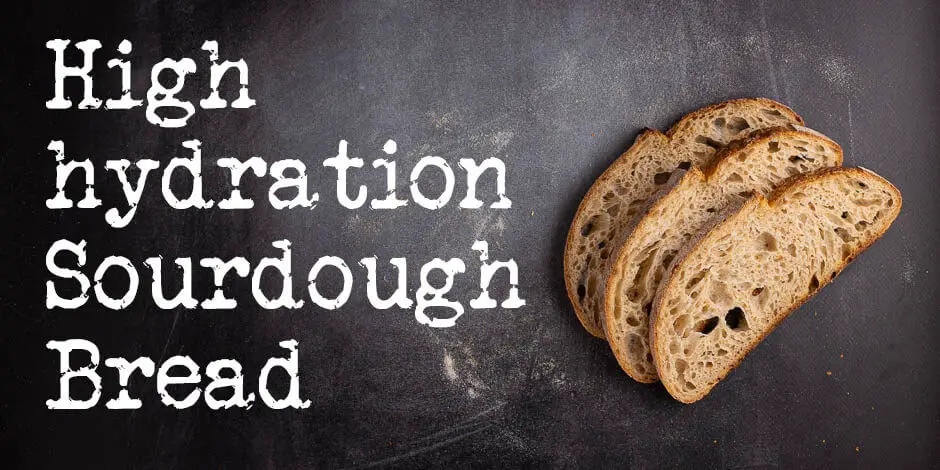

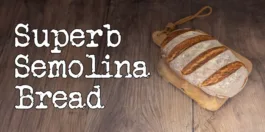
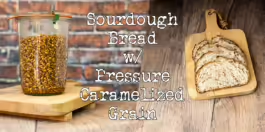


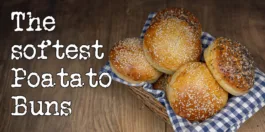

Hi Sune! I tried making this recipe with 100% bread flour and I ended up with a super dense, flat loaf that’s raw inside. 🙁 I don’t have a banneton, so I put the shaped loaf in a small rectangular storage container. When I pulled it out of my fridge the next morning I was worried because it looked like a puddle of dough that had lost much of its shape. Any idea what went wrong?
It sounds very over proofed. How long did it proof and what was the temperature?
Bulk proof in a square container is good, but once you put it into the to the final proof container it needs the approximate same shape as the bread you want. I sometimes use a pyrex bowl with a dish towel in it 🙂
Curiosity made me try your tangzhongsourdough recipe.I have been playing with Chef Reinharts soakers and mashes, but yesterday I wanted just great plain sourdough. This was it. Unfortunately I didn’t take a picture of it -next time. I have one of the loaves to my wonderful neighbor and the other didn’t last long. My neighbor caught me this evening, raving about it as she was taking some to another elder neighbor. I may be in trouble. I wanted to share with you the Joy a simple load of bread can bring in the most of a pandemic. Now I think we can increase the tagging percentage with great success but by how much 25/30
Thank you so much for helping me make bread!
Ch**********@gm***.com
Thank you for sharing. It’s wonderful what a little love put into an oven can do. <3
I have been enjoying your videos. You are so thorough and clear! Like many home bakers, I have a growing amoung of sourdough discard in the fridge. I was wondering if it would be possible to turn sourdough discard into tangzhong by heating it. I searched online but did not find anything and was wondering if the thought crossed your (genius) mind and what you think about it…
A very interesting idea. Cooking it would kill the yeast.
Changing it to the tangzong you should add more water. Assuming that you starter is 100%, you should add twice the weight of the amount of starter to get the right hydration.
So if you have 100 grams of starter you need to add 200 grams of water and then cook that as a tangzhong 🙂
Let me know how it goes. It’s super interesting.
just as a little comment. what you call tangzhong has been well known in german bread making as a Kochstück (= cooked piece) and is commonly used in breads with a high content of spelt flour, for example.
Thanks for the information. Tangzhong is not only used in asia, but it’s just the most well-known name for it 🙂
Michelle, I would be really interested to know how you get on with that as I also have a lot of discard that I don’t want to waste. I’ve read you can also use it in pancakes and in pizzas, anyone done this?
Sune, I am making the tangzhone recipe for the first time so hoping the results will be as successful as with your beginners’ recipe, which has produced wonderful bread (though I changed the flour a bit by replacing a little of the white bread flour with some rye). Thank you for the excellent site.
Hi Sune! I would like to say that you are amazing! Thank you very much for sharing all of your experience and explaining the reasoning behind so well. I love the 100% whole wheat sourdough bread video you made recently and I know that Tangzhong gives a dough very special effects. Could you please make a video on how to make 100% whole wheat sourdough bread with Tangzhong? I would like to see how Tangzhong promote the performance of the 100% whole wheat dough. Thank you very much!
Can I use rye flour instead of the whole grain wheat flour ?
Hey Sune! I really love your blog and channel. Learned a lot from it even as a foodgeek myself 😀
Q – Can I use 100% hydration rye starter and add the bread + whole wheat flour to it? It’s the only strong sourdough starter I currently have. Thanks!
Yes, any starter can be used 🙂
Hi, how to heat it if you don’t have microwave?
You can put it in a pot and heat it 🙂
Finally brave enough to try this recipe and am wondering how to know when the levain has peaked. Is it a volume or timing thing I need to track? Thank you so much!!!
Thanks for all your great SD techniques/recipes.
I want to give this recipe a go. It states 17 hour time frame…is there a way to split this between two days? I have been doing the super easy SD and like that you rest in fridge overnite…can this be done with this recipe as well…if so at what point to you do the overnite rest,
I should edit my post/question. I said Rest in the fridge…should have said rest on the countertop for 9 hours. So for the super hydration…can you rest overnite after the autolyse? Or after the Mix the Dough?
Never mind reread the recipe and watched the video..I am excited to give this a go…I only have round banetons…so mine will be round.
Hi Sune, I tried this recipe today and it was a success – thank you! I’m still a novice baker and found the dough relatively easy to handle as you predicted. Curious to know whether you’ve ever done an experiment comparing the tangzhong recipe with a comparable hydration recipe not using the tangzhong – how significant/noticeable are the differences?
Hi there,
I am having a problem with very moist and gummy final product.
I have tried cooking fir longer covered and uncovered to no avail.
What do you think I can do to improve in this area?
Thanks
It sounds like the dough proved for too long.
Hi Sune, I love this recipe. I’ve made it as written and with all bread flour. I saw that you said the tangzhong could be increased to 40% of the dough volume so I’ve tried that. The final loaf comes out great. My question is, there’s not enough water left out of the tangzhong to autolyze the flour. I have just been mixing the tangzhong, flour, water, salt and starter all at once and letting it rest for an hour. I’m wondering if you have a suggestion for a better method?? The crumb is so moist and stays moist for days. My go to recipe! Thanks.
Hi Sune! I am ready to bake this tasty looking bread! I did something which I think is an enlightened moment, I used discard starter in making my tangzhong roux. I used double the weight of the flour (to accommodate needing 53 g flour), subtracting 53 g from the water. It thickened up nicely and looked as tangzhong should. The dough looks great and I can’t wait to see the results! Since discard is merely flour and water, it can be used in recipes that call for flour and water, just adjust the water and flour as necessary in the recipe. I used discard starter in making the roux for the Thanksgiving gravy too, it was delicious! Thank you for a well written out recipe!
Hi Sune,
Not really for publishing, just for your personal interest:
Tangzhong
This is Mandarin and “zh” in Mandarin is pronounced “ch” i.e. it is more acurately pronounced: Tangchung
Great site!
This is a great recipe. I’ve used discard instead of flour in the tangzhong (using 106 g discard plus 213 g water instead of 53 g flour and 266 g water to get the same hydration), and love the addition of the flavor that brings to the bread.
Awesome idea with using the starter <3
I’ve been making this recipe for years. Thank you so much!!!
Thank you for using it <3